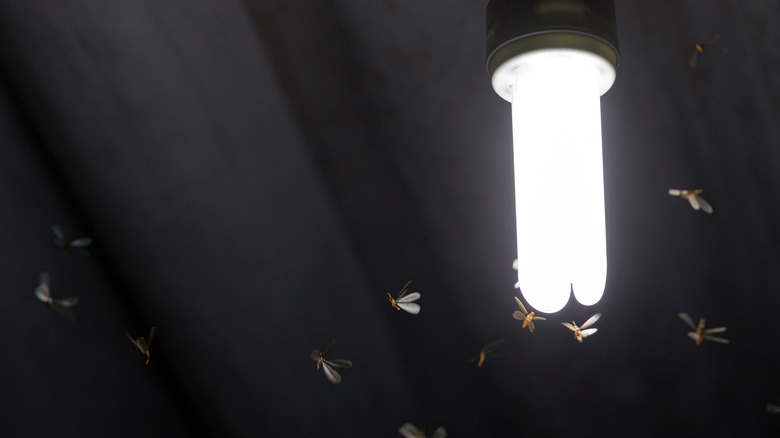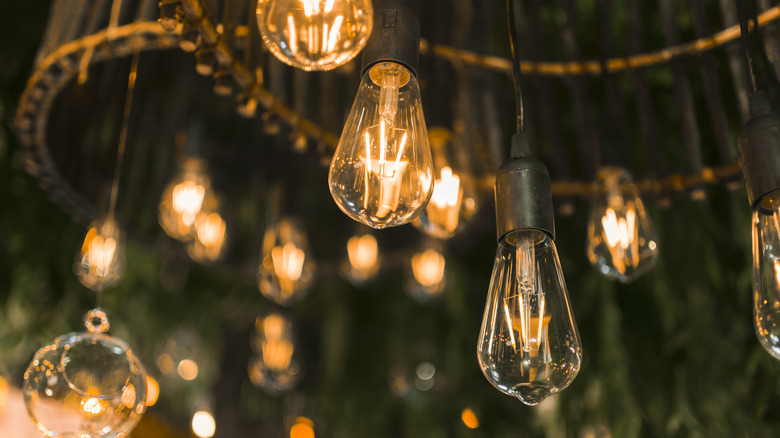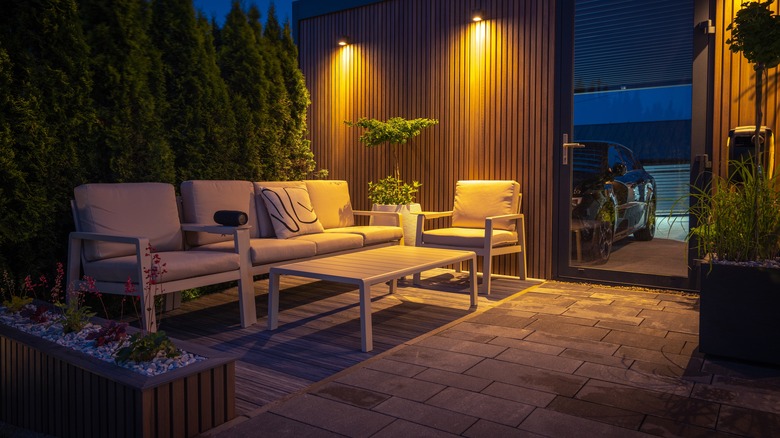Why Your Patio Lighting May Be Attracting Unwanted Pests (And What To Do Instead)
We may receive a commission on purchases made from links.
You've probably observed the annoying way that pests can flock to your patio light. It seems like they enjoy the illuminating bulbs more than we do. While you can keep the lights off as much as possible to avoid signaling the creepy-crawlers to your home, one of the best ways to keep bugs away from your porch lights is to choose the right type of bulb. Lighting that emits heat and glows in cool-colors can be a magnet for the pest.
Why the critters fancy the glowing orbs isn't clear. Some scientists believe the bugs use the light to orient themselves and others say the artificial glow is mistaken for the sun or moon. What is known for sure is that certain insects are are positively phototactic, meaning they gravitate toward bright sources like your outdoor lanterns or string lights (think of moths being drawn to a flame). Other insects, like cockroaches, are negatively phototactic, meaning they run away from the light. Swapping your bulbs can be an easy way to deter as many light-loving bugs as possible so you can enjoy a less insect-infested patio.
Hot bulbs are a magnet for insects
The brighter the bulb and the more heat it emits, the more bugs you might see flying around your patio fixture. The light's warmth and intensity interest the critters. The heat radiating off of the lighting can be a source for the cold-blooded critters to warm up. The bright lights also interest bugs from a farther distance than less vibrant lights. Incandescent and halogen bulbs typically have higher wattages, which releases brighter glows and heat radiation that lure the critters in.
LED, sodium vapor, mercury vapor, and fluorescent bulbs emit less bug-attracting heat and are better alternatives to incandescent and halogen bulbs. LED lightbulbs are the best option for your outdoor light fixtures. They have less of the UV and infrared rays that bugs like. LEDs with low brightness are best to keep the critters away from your porch. The color of these bulbs can also make a difference in the number of bug parties you'll be hosting on your patio — here's how to learn more about the different kinds of LED lightbulbs.
The color of your light makes a major difference
From a bug's eye view, cool temperature colored lights like blue and purple are homing magnets. However, insects can't see warm temperature colored lights like red or orange. Their visual range just doesn't absorb these shades, similarly to how humans can't see ultraviolet lights. Warm-colored bulbs will be invisible to the pests and invite less critters to your home compared to cool-colored lights. So while LED bulbs will emit less bug-attracting heat, cool white and blue-tinted LEDs can still attract critters.
Yellow bulbs are the best option for your commercial or DIY backyard patio lights. They don't lure in pests and still have a neutral feel unlike harsh red or orange lighting. There are warm-colored bulbs on the market advertised as bug repellent lights, like these Outdoor LED Bug Light Bulbs from Amazon for $8, but remember that no light is completely bug repellent. Insects are attracted to the illuminating bulbs, it's just science. However, cutting down on the heat and cool-light your bulbs emit is one way to detract the insects.


